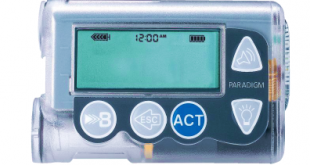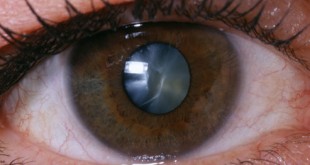Oral Medications For The Treatment Of Type-2 Diabetes Mellitus
Oral anti-diabetes can be divided into six classes. Each class of oral anti-diabetes lowers blood sugar level through unique mechanism.
Class of Anti-Diabetes Tablet
- Biguanides
Examples of medication :
- Metformin (Glucophage®),
- Metformin XR (Glucophage XR®),
- Metformin + Glibenclamide (Glucovance®),
- Metformin + Glimepiride (Amaryl M®),
- Metformin + Rosiglitazone (Avandamet®),
- Metformin + Pioglitazone (Actoplus Met®),
- Metformin + Sitagliptin (Janumet®),
- Metformin + Vildagliptin (Galvusmet®),
- Metformin + Saxagliptin (Kombiglyze XR®).
- Sulfonylurea
Examples of medication :
- Glibenclamide (Daonil®),
- Gliclazide (Diamicron®),
- Gliclazide MR (Diamicron MR®),
- Glimepiride (Amaryl®),
- Metformin + Glimepiride (Amaryl M®).
- Alpha-Glucosidase Inhibitor
Examples of medication :
- Acarbose (Glucobay®),
- Miglitol (Glyset®).
- Thiazolidinediones
Examples of medication :
- Rosiglitazone (Avandia®),
- Pioglitazone (Actos®),
- Metformin + Rosiglitazone (Avandamet®),
- Metformin + Pioglitazone (Actoplus Met®).
- Meglitinides
Examples of medication :
- Repaglinide (Novonorm®),
- Nateglinide (Starlix®).
- Dipeptidyl Peptidase-4 (DPP-4) Inhibitor
Examples of medication :
- Sitagliptin (Januvia®),
- Vildagliptin (Galvus®),
- Saxagliptin (Onglyza®),
- Linagliptin (Tradjenta®),
- Metformin + Sitagliptin (Janumet®),
- Metformin + Vildagliptin (Galvusmet®),
- Metformin + Saxagliptin (Kombiglyze XR®).
For every class of medications, there are differents ;
- mechanism of action,
- administration / how to take, and
- adverse reactions.
| Class of tablet
& Examples of medication |
Mechanism of Action | How to take / Administration | Adverse Reactions |
|
BIGUANIDES
· Metformin HCl · Metformin XR · Metformin SR |
· Increases sensitivity of cells towards insulin by enhancing peripheral sugar uptake from muscle. · Inhibits liver from producing too much sugar. · Reduces absorption of sugar in small intestine.
|
To be taken after food to avoid adverse reactions. |
· Nausea · Vomiting · Giddiness · Diarrhoea · Stomach discomfort · Headache · Skin allergy |
|
SULFONYLUREA
· Glibenclamide · Gliclazide · Gliclazide MR · Glimepiride |
· Increases production of insulin by the pancreas. |
To be taken 15-30 minutes before food. |
· Low blood sugar (hypoglycaemia) · Weight gain · Nausea · Vomiting · Diarrhoea · Skin allergy.
|
|
ALPHA-GLUCOSIDASE INHIBITOR
· Acarbose · Miglitol |
· Inhibits specific enzymes in small intestine thus slowing down digestion and absorption of sugar into blood stream.
|
To be chew with first bite of food. |
· Bloating · Nausea · Diarrhoea · Fart |
|
THIAZOLIDINE-DIONES
· Rosiglitazone · Pioglitazone |
· Increases insulin sensitivity by activating specific genes which involve in fat formation and metabolism of carbohydrate. |
To be taken before or after food. |
· Fluid retention · Weight gain · Increase cholesterol (LDL) · Increase risk of bone fracture · Increase risk of congestive heart failure
|
|
MEGLITINIDES
· Repaglinide · Nateglinide |
· Increases production of insulin by the pancreas, so it is effective for post-prandial hyperglycaemia. |
To be taken right before food. |
· Low blood sugar (hypoglycaemia) · Weight gain · Diarrhoea · { Giddiness } · { Skin allergy }
|
|
DIPEPTIDYL-PEPTIDASE-4 (DPP-4) INHIBITOR
· Sitagliptin · Vildagliptin · Saxagliptin · Linagliptin
|
· Increases production of insulin by the pancreas · Reduces glucagon production thus inhibits conversion of glycogen to glucose. |
To be taken before or after food. |
· Nausea · Vomiting · Diarrhoea · Headache · Skin allergy. |
All of the medications above have to be stored as below :
- Keep at room temperature.
- Protect from light, heat and moisture.
- Keep away from children.
General Advice On Taking Oral Anti-Diabetes
- Read the label carefully before taking your medications.
- Be compliant in taking your medications.
- Inform your healthcare professional if you experience any side effect or problem after taking the medications.
- Inform your healthcare professional if you are pregnant or breastfeeding.
References :
- Clinical Practice Guidelines Task Force. (2009). Clinical practice guidelines: Management of type 2 diabetes mellitus (4th ed.). Kuala Lumpur: Malaysia. Ministry of Health Malaysia.
- Drugs Counseling Guideline Working Committee. (2003). Drugs counseling guide: Endocrine system. Kuala Lumpur: Malaysia. Pharmaceutical Services Division, Ministry of Health Malaysia.
- P. O., Knoben. J. E., & Troutman. W.G. (2002). Handbook of clinical drug data (10th ed). New York. U.S. McGraw-Hill.
- C. F., Armstrong. L.L., Goldman. M. P., & Lance. L.L. (2008). Drug information handbook (17th ed). Canada. Lexi-Comp, Inc.
 PENDIDIKAN PESAKIT Kementerian Kesihatan Malaysia
PENDIDIKAN PESAKIT Kementerian Kesihatan Malaysia



